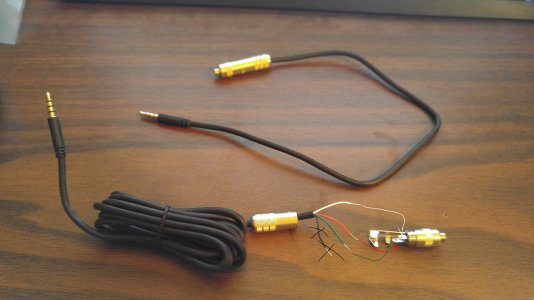Me, also.
I have a pair of Sennheiser HD 650s that I sometimes try to wear while taking the dog for a walk, and my phone will start/stop over and over and over again until I get mad and unplug it just to stop the annoyance (hitting "stop" in the music app doesn't do any good). The Google Voice screen will also pop up randomly, even if I'm trying very hard to keep from moving the phone (like when watching something on Hulu while laying in bed).
The only thing I can figure is that the headphone plug is making intermittent connection with the ground or mic contact in the headphone jack of the phone. The headphone plug can be laid out in two different ways: Tip, ring, sleeve; or tip, ring, ring, sleeve. A normal headphone plug (with no mic or remote) uses the tip for the left speaker, the ring for the right, and the sleeve for common ground of both speakers. A headset uses the tip for left audio, the first ring for right audio, and the second ring and sleeve for the mic and a common ground for both speakers and the mic (there are two different standards for whether the second ring or the sleeve is the mic or ground, but no matter which way these are laid out, shorting the two of them together produces the same result). The way you can cause the play/pause feature to work is by shorting the mic contact to ground for a short period of time, then returning to an open state. When you are using headphones that don't have a mic or remote (that is, they use a 3-conductor, or TRS plug) the mic contact is always shorted to ground. So in order for this to happen, the headphone has to lose contact with ground and/or mic, then make contact between the two again for a short period, then lose contact again, which fools the phone into believing that you just hit the play/pause button. In order for the Google Voice search screen to pop up, the only difference is that the period of time that the mic and ground contacts were shorted -- in between the losses of contact -- lasts a little longer. You can hold the play/pause button for a couple of seconds (maybe less) on a headset with a remote to cause Google Voice to pop up normally.
I have noticed, at least with my phone, that the amount of play in the headphone jack is pretty extreme. That means that just stressing the headphone plug from one angle to the opposing angle could cause this open-short-open circuit to happen. Imagine a pair of pencils on a desk with a ruler laid across them. If the plug is at an angle, only one is making contact (imagine for the sake of argument that the underscore is "making contact" and the hyphen "isn't"):
_____---------
.....O......O.....
Then, as the plug starts moving, they both make contact:
___________
.....O......O.....
This is where the phone says "Hey, they are pressing the play/pause button!" Now, the plug finally gets pushed all the way to the opposite side:
--------______
.....O......O.....
And once again you have an open circuit and this tells the phone that you "pressed and released the play/pause button." If the amount of time that the middle position was held lasted longer than a normal short click, the phone reads that as meaning that you wanted to bring up the Google Voice app. This what I believe is happening in some of our phones. When I plug in a pair of Bose in-ear headphones, I don't have any issues, because the mic and ground contacts never get shorted together unless the play/pause button is pressed AND the headphone plug is making contact with all four jack contacts, so no matter how I wiggle the plug, nothing happens.
One possible fix would be to create a short cable with a TRS jack and a TRRS plug, and never connect the second ring or the sleeve (pick one) of the jack to the sleeve of the plug (normal adapters would connect both the second ring and the sleeve of the jack to the sleeve of the plug). I'll have to order some parts to see if I can make this work, and will try to remember to get back here to report whether it works. My only worry is that not connecting the mic and ground together will cause the phone to be confused as to whether or not a TRS or TRRS jack has been plugged in. Apple devices do a series of checks to figure out what has been plugged in, and this could cause an Apple device to not output any sound to the headphone jack. I'm not sure if Android phones do a similar check, or if they simply believe the "jack sense" output of modern headphone jacks (most 1/8" [3.5mm] headphones jacks have a separate pin that gets shorted to ground [I believe] when a headphone plug is inserted into the jack to notify to the device that it should reroute sound output from the internal speaker to the headphone jack).
Edit: Please reply if you know any of what I just said to be false. I haven't gone looking for datasheets on anything, and only did a cursory glance at what the internet claims to be true about the layout of TRRS plugs via Google image search. Most of what I have said is just "the way I understand things to be", and I have been proven wrong on my assumptions about other things before.




